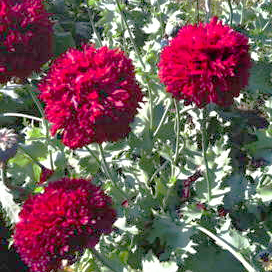- Flower Seeds
- >
- All Flowers
- >
- Crimson Peony Poppy
Crimson Peony Poppy
SKU:
$3.30
$3.30
Unavailable
per item
Very double, lush red poppies are big and showy on long stems with silver foliage. Sown in fall or early spring, these bloom spectacularly in May. Gorgeous with other colors or by themselves. A great successor to early bulbs. Annual that self-sows under good conditions. 200 seeds
Like other somniferum poppies, these need cool soil and light for germination. Prepare a bed with good fertility and fine texture. Tamp the surface, scatter the seed, and rake in very lightly. Thin to 18"-24" apart; crowded plants will be stunted, so allow adequate space.
Only 1 left!
Plant in fall or winter in zones 6-9 and spring in colder areas. Poppies like a cool start and a hot dry finish. Working in a lot of good compost or other nitrogen source, and then a thin layer of sand, small gravel, crumbly-fine soil, or even a slight scattering of straw gives them the fertility and matrix they need. The seed should be scattered thinly (mix with sand or soil to stretch it) on top of the prepared bed. They need light to germinate, so do not cover, just water well and keep moist. If you use pots or flats, transplant while quite small--the roots are brittle and larger plants don't transplant well.

